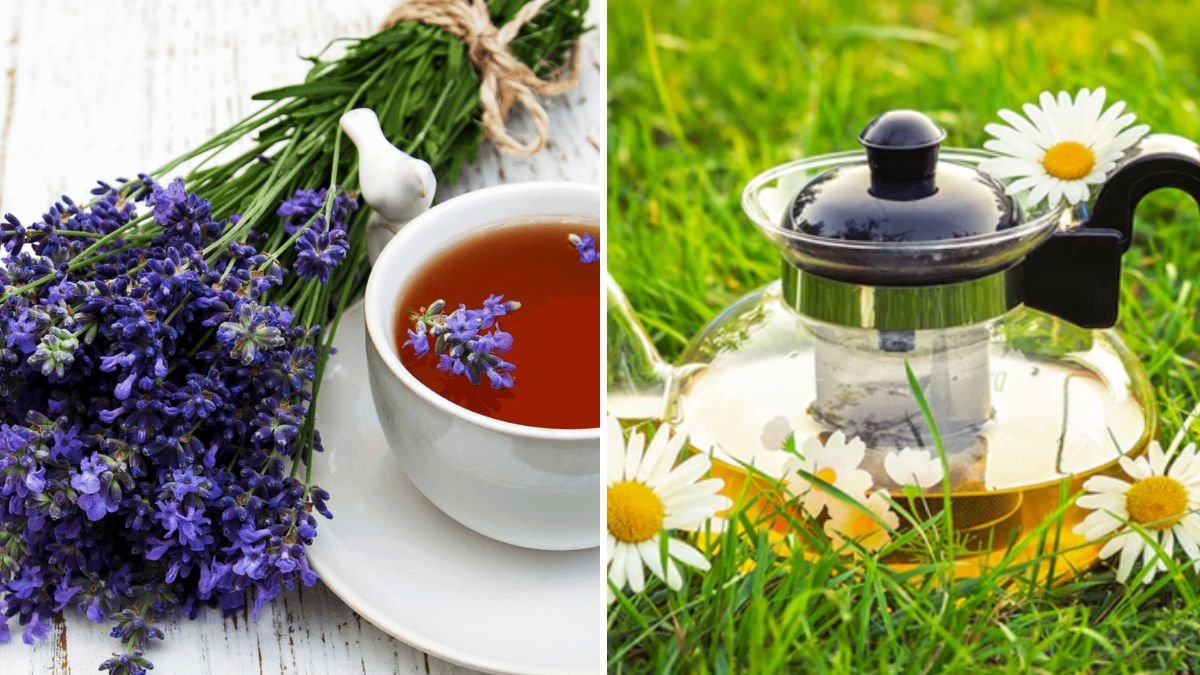A tea garden is a delightful blend of beauty, fragrance, and functionality. Imagine stepping into a garden where the air is scented with calming chamomile, refreshing mint, and soothing lavender—each plant thriving and ready to be harvested for your favorite herbal teas. A tea garden not only provides fresh ingredients for brewing but also adds charm, color, and biodiversity to your outdoor space.
This guide explores the step-by-step process to grow a tea garden featuring chamomile, mint, and lavender, covering planting techniques, care, harvesting, and tips for creating a thriving, flavorful garden.
1. Planning Your Tea Garden
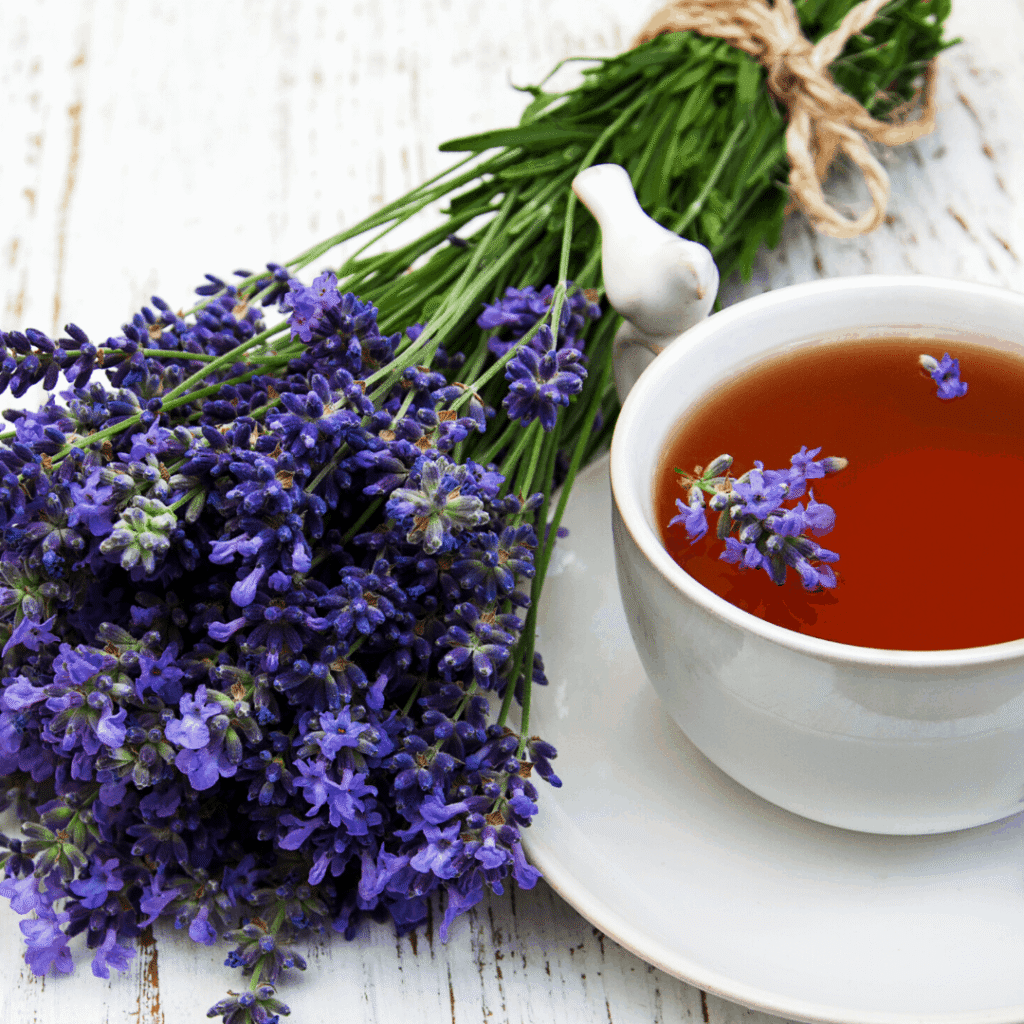
Before planting, it’s essential to plan your tea garden to ensure healthy growth and optimal harvest.
Consider the Location:
- Sunlight: Most tea herbs thrive in full sun, needing at least 6 hours of direct sunlight daily. Mint tolerates partial shade but grows best in sunny spots.
- Soil: Well-draining, fertile soil is crucial. Lavender prefers slightly alkaline soil, chamomile tolerates moderate fertility, and mint thrives in rich, moist soil.
- Space: Plan enough room for each plant to grow without overcrowding. Mint can spread aggressively, so consider container planting.
Garden Layout Ideas:
- Raised Beds: Ideal for controlling soil conditions and drainage.
- Herb Spiral: Efficiently uses vertical space and microclimates, ideal for multiple herbs.
- Containers: Great for controlling mint spread and easy harvest access.
Tip: Group plants with similar water and sunlight requirements together for easier maintenance.
2. Selecting Chamomile

Chamomile is prized for its calming effects, daisy-like flowers, and sweet fragrance. Two popular varieties are:
- German Chamomile (Matricaria chamomilla): Annual, taller, with strong tea flavor.
- Roman Chamomile (Chamaemelum nobile): Perennial, low-growing, ideal as ground cover or edging.
Planting Chamomile:
- Seeds: Sow directly outdoors in spring or start indoors 4–6 weeks before the last frost.
- Spacing: Thin seedlings to 8–12 inches apart.
- Soil: Light, sandy soil with good drainage. Chamomile tolerates low fertility.
- Sunlight: Full sun ensures robust growth and maximum flower production.
Care Tips:
- Watering: Keep soil slightly moist; avoid overwatering to prevent root rot.
- Pruning: Deadhead flowers regularly to encourage continuous blooms.
- Pest Control: Chamomile is relatively pest-resistant; watch for aphids occasionally.
Harvesting:
- Harvest flowers when fully open for the most potent flavor.
- Dry in bundles upside down in a dark, ventilated area.
- Store in airtight containers for tea use.
3. Growing Mint
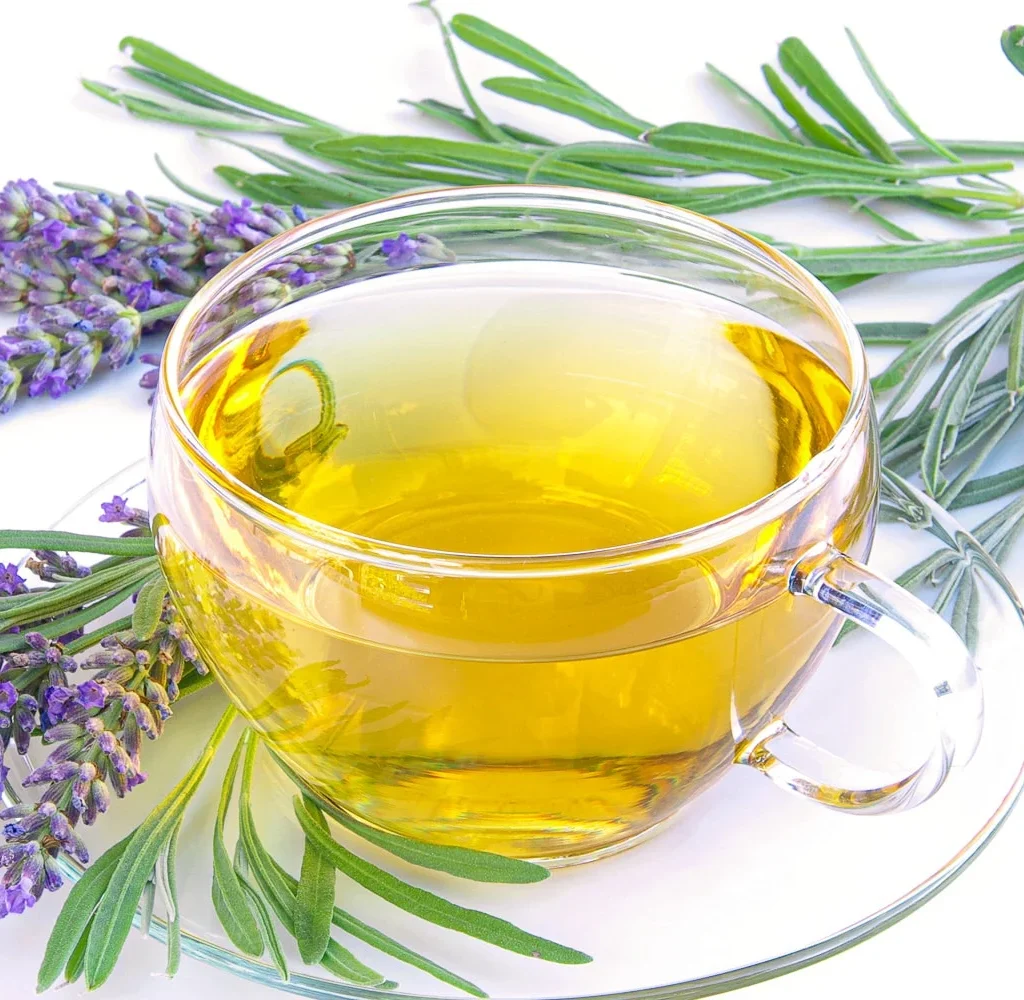
Mint is one of the most versatile herbs, providing a cooling flavor and invigorating aroma for teas and culinary dishes. Varieties include peppermint, spearmint, and chocolate mint.
Planting Mint:
- Propagation: Best grown from cuttings or small plants rather than seeds for faster growth.
- Containers: Plant in pots or use barriers to prevent aggressive spreading.
- Spacing: Keep 12–18 inches apart if in the ground.
- Soil: Rich, moist soil with good drainage is ideal.
Care Tips:
- Watering: Mint thrives in consistently moist soil.
- Pruning: Regularly trim leaves to encourage bushy growth and prevent flowering, which can reduce leaf flavor.
- Sunlight: Prefers partial to full sun; too much heat may make leaves bitter.
Harvesting:
- Harvest leaves as needed, ideally before the plant flowers for the best flavor.
- Use fresh or dry leaves for tea, and freeze some for later use.
- Trim entire stems for large harvests, leaving enough growth for regeneration.
Tip: Mint spreads quickly; container planting prevents it from overtaking your garden.
4. Cultivating Lavender
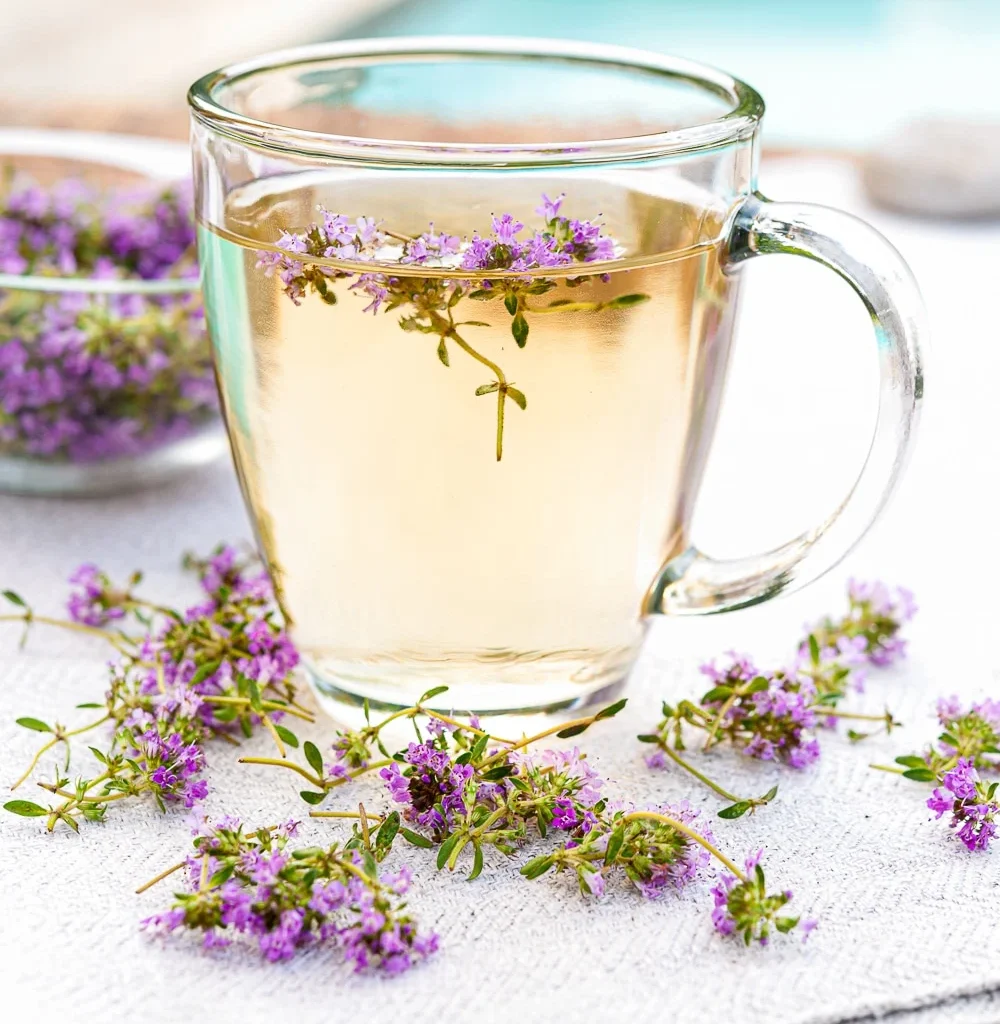
Lavender is celebrated for its soothing fragrance, beautiful purple blooms, and relaxing tea qualities. Popular varieties for tea gardens include English lavender (Lavandula angustifolia) and French lavender (Lavandula dentata).
Planting Lavender:
- Soil: Well-draining, sandy, or slightly alkaline soil is crucial.
- Sunlight: Full sun ensures strong growth and abundant blooms.
- Spacing: Plant 12–18 inches apart to allow airflow.
- Propagation: Use seeds, cuttings, or small nursery plants.
Care Tips:
- Watering: Lavender is drought-tolerant; water sparingly once established.
- Pruning: Prune after flowering to maintain shape and encourage new growth.
- Fertilization: Minimal feeding needed; too much nitrogen reduces flower production.
Harvesting:
- Cut flower spikes just before full bloom for tea use.
- Hang upside down in bundles in a dry, dark area.
- Store dried flowers in airtight containers for months.
Tip: Lavender pairs beautifully with chamomile and mint in herbal tea blends.
5. Designing a Harmonious Tea Garden
A successful tea garden balances functionality, beauty, and plant compatibility:
- Companion Planting: Chamomile attracts beneficial insects and improves the growth of neighboring plants like lavender and mint.
- Aesthetic Appeal: Combine the soft white flowers of chamomile with vibrant green mint leaves and purple lavender blooms.
- Ease of Harvest: Arrange plants with taller chamomile or lavender at the back and mint in containers or front areas for easy access.
- Microclimates: Use raised beds, garden borders, or herb spirals to create slightly different soil and moisture conditions suitable for each plant.
Tip: Interplant herbs to maximize space and create a visually appealing, functional garden.
6. Seasonal Care and Maintenance
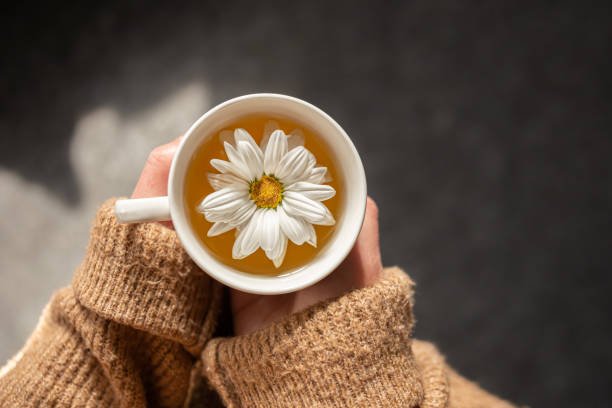
To keep your tea garden thriving year-round, regular maintenance is key:
- Watering: Maintain consistent moisture for mint and chamomile; water deeply but less frequently for lavender.
- Mulching: Apply organic mulch to retain soil moisture, regulate temperature, and suppress weeds.
- Pest and Disease Control: Use natural solutions like neem oil or insecticidal soap to protect herbs.
- Pruning: Trim mint and lavender regularly to encourage bushy growth; deadhead chamomile flowers to promote more blooms.
- Winter Care: Protect chamomile and mint with mulch or move potted plants indoors. Lavender prefers a sheltered, sunny spot in colder regions.
Tip: Observing your garden daily helps catch potential issues early, ensuring healthy plants.
7. Harvesting and Using Your Tea Herbs
Proper harvesting ensures maximum flavor, aroma, and longevity:
- Chamomile: Harvest flowers in the morning after dew dries; dry for tea in bundles.
- Mint: Harvest leaves regularly before flowering; use fresh or dry for tea.
- Lavender: Cut flower spikes at peak bloom; dry in bundles for tea or culinary use.
Tea Blending Ideas:
- Calming Chamomile Tea: Brew dried chamomile flowers with a touch of honey.
- Refreshing Mint Tea: Steep fresh or dried mint leaves in hot water for a cooling, invigorating drink.
- Lavender-Chamomile Blend: Combine dried lavender and chamomile for a relaxing bedtime tea.
- Herbal Trio Tea: Mix chamomile, mint, and lavender for a soothing, aromatic infusion.
Tip: Experiment with flavors and proportions to create a personalized herbal tea blend.
8. Benefits of Growing Your Own Tea Garden
- Freshness: Enjoy herbs at peak flavor, free from pesticides.
- Cost-Effective: Reduce grocery bills by harvesting herbs from your garden.
- Health Benefits: Herbal teas can promote relaxation, digestion, and antioxidant intake.
- Aesthetic Value: Tea gardens add fragrance, color, and charm to outdoor spaces.
- Sustainability: Growing your own herbs reduces packaging waste and supports pollinators.
Conclusion
Growing a tea garden full of chamomile, mint, and lavender combines beauty, flavor, and wellness in a single space. By carefully selecting the right location, soil, and planting techniques, you can create a garden that thrives, providing fresh, aromatic herbs for tea and culinary use. Regular care, pruning, and proper harvesting ensure that your tea garden remains productive and visually appealing throughout the seasons.
A tea garden is more than just a source of herbs—it’s a sanctuary of fragrance, color, and relaxation. Whether used for calming bedtime teas, refreshing mint infusions, or decorative floral displays, cultivating chamomile, mint, and lavender allows you to enjoy the full sensory benefits of a vibrant and functional garden right at home.
Tip: Consider expanding your tea garden with other complementary herbs such as lemon balm, rosemary, or thyme to create an even richer herbal tea experience.
